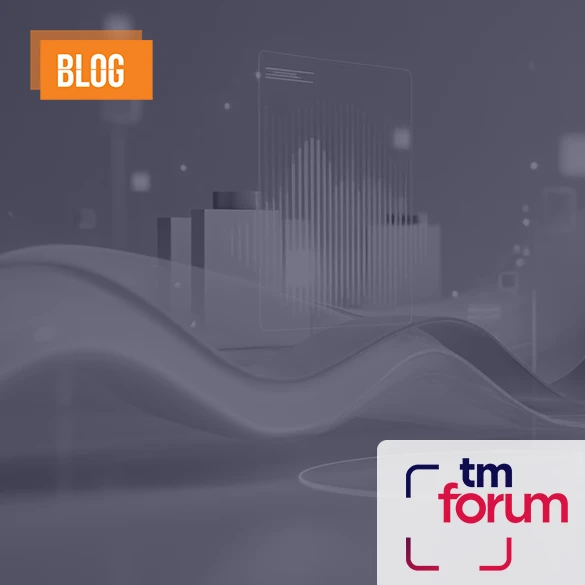How to succeed in creating the right architecture for an agile and sustainable operation?


Digital transformation brings new and innovative capabilities to CSPs, addressing both business and technology challenges and delivering flexibility and agility throughout their operations. In this discussion with Ali Durmuş, PhD, Founding Partner and CTO of Etiya we look specifically at some of those benefits and features of a digital BSS.
What are the key motivations for your customers as they commit to large digital transformation projects?
The ability to respond quickly to market opportunities and threats, to test the market, to launch new products and then to refine and, if necessary, revise product and marketing strategies is something that all our customers aspire to. Many operators are now looking to expand into new B2B markets and specific vertical sectors. They need to try out new business models and partner with other companies to deliver new services. More broadly this is about growing revenues, increasing market share, and doing so in such a way as to be efficient and reduce costs wherever possible.
And what are the main obstacles to being able to meet these objectives, and how can you overcome those?
It’s really a combination of culture and technology that slows down digital transformation. It all starts with setting the right objectives and putting in place the KPIs that are needed to drive change. Having a clear overview of what the company needs and how to bring together business, commercial and financial goals are essential to define your exact demands in terms of technology and capabilities. Vendor selection is key, to have the right partner by your side throughout the whole transformation journey, who can provide you not just with the technology you need, but who can also act as a consultant already in the planning phase.
Then, on a more personal level, it’s about getting people in the business to be comfortable with adopting new tools and technologies and changing approaches that may have served the business well for 10-20 years or more. Mindset change can be a bigger obstacle than technology.
But the way this new technology works can largely influence the human part of the transformation process. Flexibility, speed, and ease of operation will largely help adoption: with user-friendly interfaces and no-code/low-code functions the business side will be able to take the initiative and, for example, create new bundles and offers instead of waiting for lengthy IT developments. This will enhance their sense of ownership in the process, and will enable them to see the desired results quickly.
How can a digital BSS provide the technical features and capabilities that address the future challenges and opportunities that CSPs face?
CSPs want to control their technology roadmaps and adopt architectures that allow them to make small, incremental changes without ripping out whole systems and spending more money on integration and support than on the technology itself. For this, modularity and the possibility of elastic scaling are paramount, as also adopting open architectures based on TM Forum Open APIs that allow operators to integrate new systems and technologies with limited customization. The easiest way of achieving this is to put software into the cloud – either operators’ own private clouds or, in some cases, a public cloud. And by adopting a microservices-based architecture operators can then modernize and upgrade their BSS systems relatively quickly and easily.
In terms of capabilities, it’s more than just building a modern version of a CSP’s current BSS. Even in the B2C segment, customer requirements are much more complex than they were a couple of years ago. Next generation BSS needs to provide comprehensive customer experience management with AI-driven analytics and decision support. AI is crucial in providing offers and services that are personalized to individual customer needs, and it also helps in automation, that will improve process speed and accuracy, and therefore customer satisfaction as well. It is also a key asset in churn prevention, by detecting potential issues via customer sentiment and behaviour analysis.
On the B2B side, CSPs are eager to monetize all the network infrastructure investments they made in recent years with 5G and IoT, and for this, they will need to adopt multi-partner business models, where fully integrated business flows, constant innovation and rapid service launches are a must. They also require a flexible, real-time convergent charging, and settlement capabilities involving multiple entities. To satisfy these monetization needs, future BSS systems must be designed to enable operators to participate in ecosystems for the delivery of B2B and B2B2X solutions and services. Many operators are seeking to build their own platforms and marketplaces with enterprise customers and with third party developers. A future BSS needs to offer these partners the same type of solutions and functionality that an operator offers to its own customers.
What benefits does a digital BSS deliver for the IT function?
Over a period of 20-30 years, as operators have launched new products and services (which sometimes they still support) and subsumed (or been subsumed by) other telcos as a result of M&A activity, a growing proportion of their IT efforts and budget has been consumed by keeping the existing operations up and running. The systems that they operate are often “black boxes”, with duplications of different functions and capabilities, and when changes are needed they need to bring in a vendor specialist SI to manage the project. This means, that both maintenance and modifications can be a costly exercise.
A digital BSS offers an operator the prospect of simplification and modernization. By using open APIs, IT departments can move towards a more sustainable approach. The adoption of systems with open APIs gives them the possibility of modernizing customer-facing functions, and to connect them back into legacy back-end systems which are maybe in less need of transformation or replacement. Software upgrades, which may in the past have required systems to be shut down overnight, can now be delivered quickly and seamlessly.
A future-proof, resilient, modern IT stack, does not only bring cost efficiencies and simplified maintenance in the game, but the roles and responsibilities of an IT department will also change considerably. With a digital BSS an IT department can transform from a slow-moving “necessity” which slows the business down to a function that proactively supports the aspirations of the business. Instead of dealing with constant maintenance only, this new IT can focus on recommending new technologies and innovative solutions, enabling the creation of new products and services quickly, delivering new digital experiences and opening up new revenue streams. These novel technologies serve a double purpose: they are used to build more agile, more efficient, and automated internal systems and they can also be exposed to customers to provide better services and enhanced CX.
We often hear the term “telco to techco” being used by business and technology leaders within CSPs. Leadership teams now recognize that the future of their businesses depends on their ability to leverage their assets and on technologies such as cloud, data analytics and AI/ML, to grow beyond being a telco operation. By building on a future-proof BSS solution, there is now an opportunity for IT functions to help their companies bring together technology and business functions and decision-making and, in doing so, become the catalyst that accelerates business growth.








